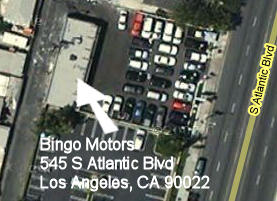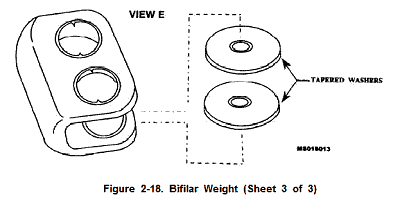The Bureau of Industry and Security (“BIS”) released today an order changing the address of Mohammad Fazeli on the Denied Persons List. Mr. Fazeli had been convicted of an attempt to export pressure sensors to Iran and was sentenced to one year and a day in jail. He was released in July 2007
Normally such an order wouldn’t merit a blog post, but something about it caught my attention. One of the addresses being corrected was this: “1439 Saltair Fazeli Ave., Los Angeles.” Hmmm. That’s cool. Mr. Fazeli was living on a street in Los Angeles that bore his surname. What a lucky guy. Or not.
If you put that address into Google Maps, you’ll find it doesn’t exist. There is a 1439 South Saltair Ave., but that’s as close as it gets. So, when the BIS order says that the 1439 Saltair Fazeli Avenue address is “no longer correct,” that’s a bit of a stretch. It was never correct.
So where in the world is Mohammad Fazeli now? According to the order he’s at 545 South Atlantic Blvd, #C, Los Angeles. Of course, since the “Saltair Fazeli” address was wrong, I couldn’t help but go back to Google Maps and check out 545 South Atlantic Boulevard. And what did we find? This:

Yep, a used car dealership called Bingo Motors. Is apartment # C perhaps one of the cars on the lot? Or maybe Mr. Fazeli is living in St. Alphonsus Catholic Church directly across the street at 532 South Atlantic Boulevard.
I suspect we’ll see Mr. Fazeli staying one step ahead of BIS, even after the next address correction for him. And, as a compliance note, be very careful if you’re doing business with anyone named Mohammad Fazeli at any address in Los Angeles or elsewhere.
UPDATE: Not surprisingly, this post (like any other post critical of something BIS has done) attracted our resident BIS troll. He stopped by to fuss about the practice on this blog of referring to “BIS ALJs.” He seems somewhat fixated on this, due apparently to an idiosyncratic notion that because these ALJs are not paid by BIS (but rather by the Coast Guard), they can’t be BIS ALJs, even though they are assigned to BIS cases. It’s rather like complaining about calling someone Joe Smith’s attorney when Mr. Smith is court appointed and paid by the Court and not by Smith. Oh well.
Needless to say, the troll stomps his foot loudly and spews lots of smoke and exclamation points when his comments don’t make it through moderation. Well, here’s an offer to our cowardly troll: leave a real work email address in the comment form (as opposed to your ususal “[email protected]”) and your comments will sail through moderation in a heartbeat. Then you can complain about my referring to “BIS ALJs” to your heart’s content. I’m not holding my breath.
UPDATE 2: The troll took the bait left in the first update and returned to continue his/her rant about “BIS ALJs.” But, as predicted, the troll is still too much of a coward to identify himself/herself, so, sadly, I won’t be able to share with you the troll’s further gems of wisdom on this issue.

 Posted by
Posted by  Category:
Category: 


 An interesting
An interesting 
 Last week the Department of Treasury’s Office of Foreign Assets Control issued a
Last week the Department of Treasury’s Office of Foreign Assets Control issued a 

